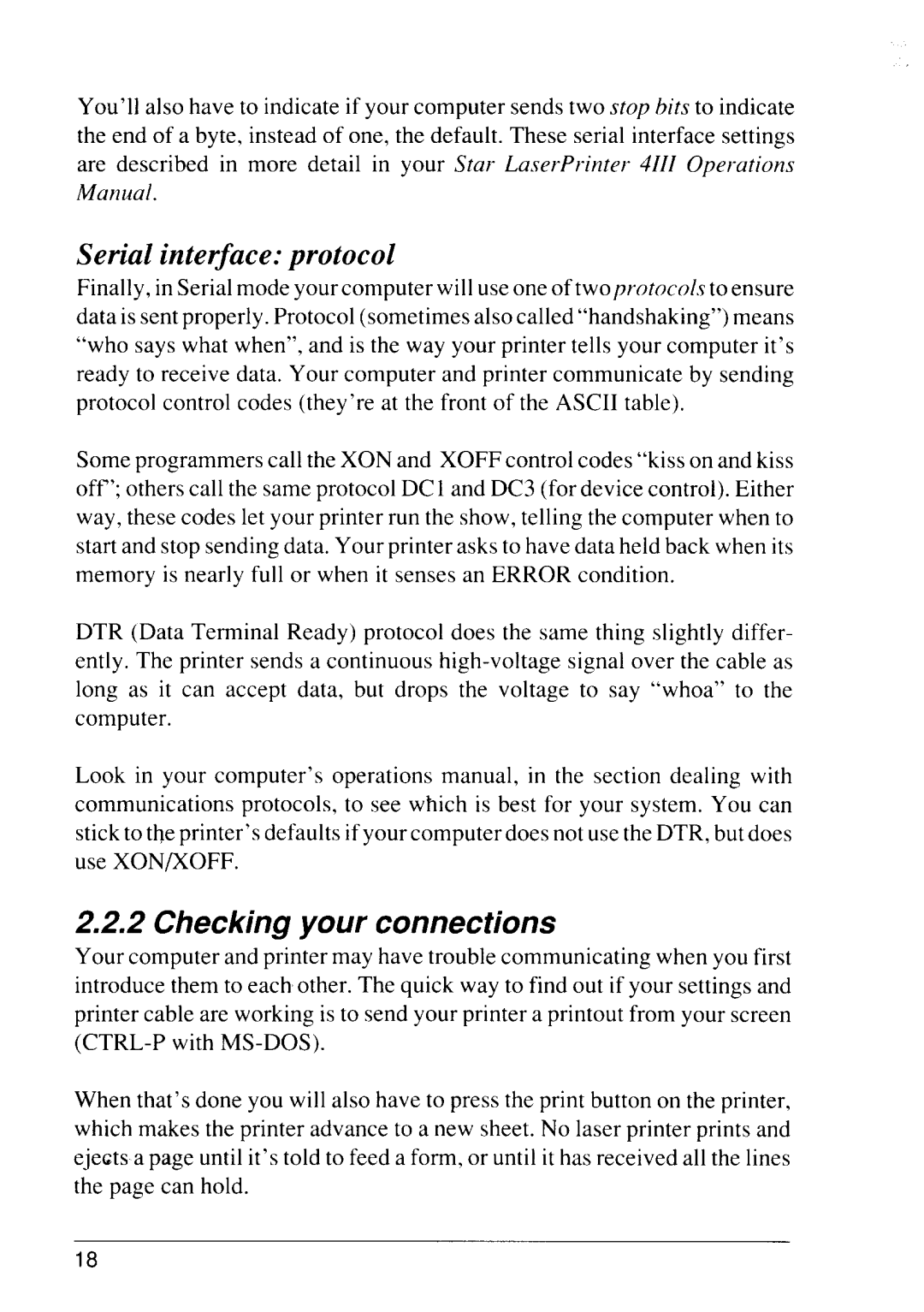
You’ll also have to indicate if your computer sends two stop bits to indicate the end of a byte, instead of one, the default. These serial interface settings are described in more detail in your Star LaserPrinter 4111Operations Manual.
Serial interface: protocol
Finally, in Serial mode your computer will use one of two protocols to ensure data is sent properly. Protocol (sometimes also called “handshaking”) means “who says what when”, and is the way your printer tells your computer it’s ready to receive data. Your computer and printer communicate by sending protocol control codes (they’re at the front of the ASCII table).
Some programmers call the XON and XOFFcontrol codes “kiss on and kiss off’; others call the same protocol DC 1and DC3 (for device control). Either way, these codes let your printer run the show, telling the computer when to start and stop sending data. Your printer asks to have data held back when its memory is nearly full or when it senses an ERROR condition.
DTR (Data Terminal Ready) protocol does the same thing slightly differ- ently. The printer sends a continuous
Look in your computer’s operations manual, in the section dealing with communications protocols, to see which is best for your system. You can stick to the printer’s defaults if your computer does not use the DTR, but does use XON/XOFF.
2.2.2 Checking your connections
Your computer and printer may have trouble communicating when you first introduce them to each other. The quick way to find out if your settings and printer cable are working is to send your printer a printout from your screen
When that done you will also have to press the print button on the printer, which makes the printer advance to a new sheet. No laser printer prints and ejects a page until it’s told to feed a form, or until it has received all the lines the page can hold.
18
